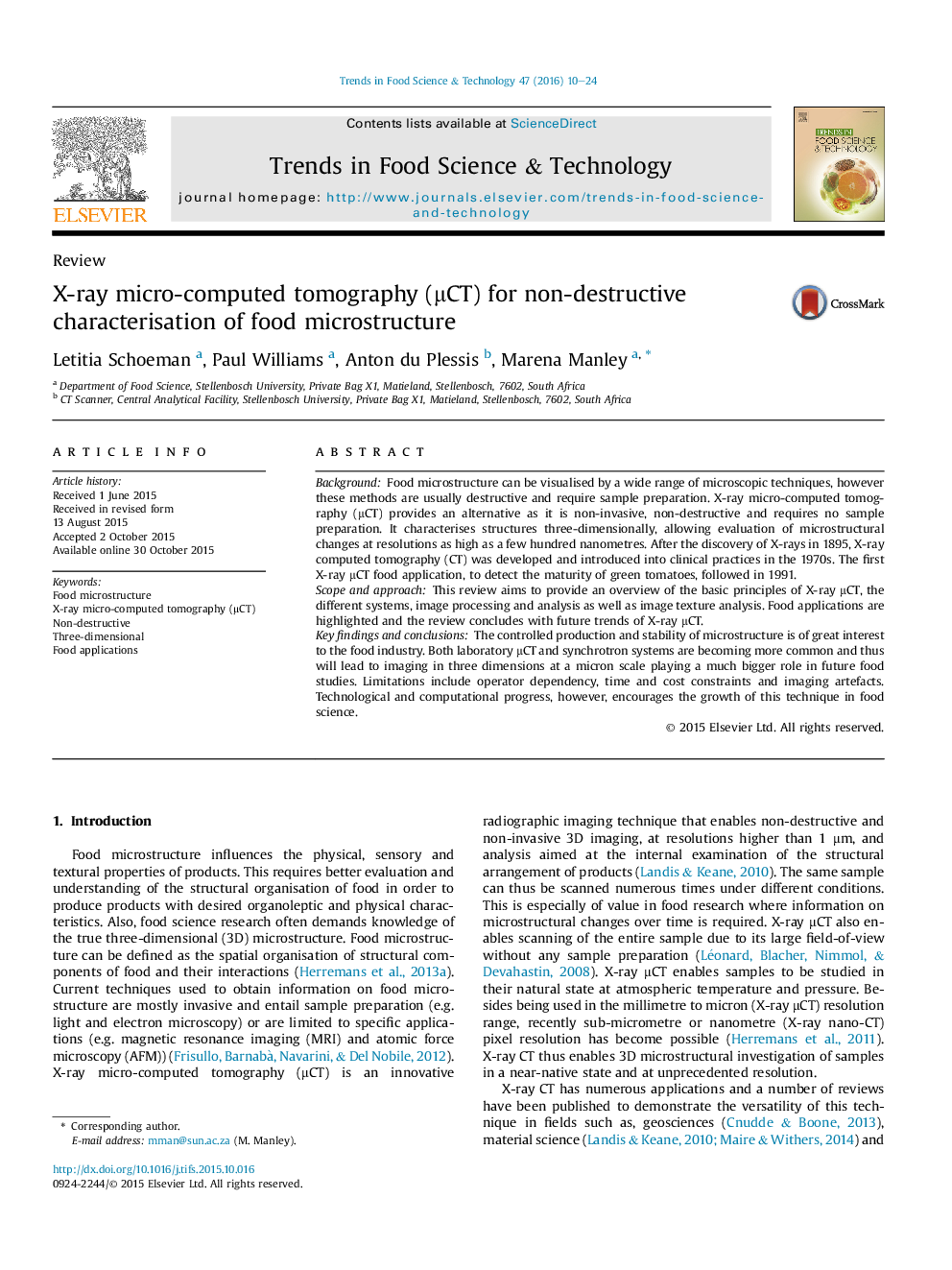| Article ID | Journal | Published Year | Pages | File Type |
|---|---|---|---|---|
| 2098565 | Trends in Food Science & Technology | 2016 | 15 Pages |
•Food microstructure can be visualised using X-ray micro-computed tomography (μCT).•X-ray μCT is a non-invasive and non-destructive 3D imaging technique.•Computational progress encourages the growth of this technique in food science.•X-ray μCT allows evaluation at resolutions as high as a few hundred nanometres.
BackgroundFood microstructure can be visualised by a wide range of microscopic techniques, however these methods are usually destructive and require sample preparation. X-ray micro-computed tomography (μCT) provides an alternative as it is non-invasive, non-destructive and requires no sample preparation. It characterises structures three-dimensionally, allowing evaluation of microstructural changes at resolutions as high as a few hundred nanometres. After the discovery of X-rays in 1895, X-ray computed tomography (CT) was developed and introduced into clinical practices in the 1970s. The first X-ray μCT food application, to detect the maturity of green tomatoes, followed in 1991.Scope and approachThis review aims to provide an overview of the basic principles of X-ray μCT, the different systems, image processing and analysis as well as image texture analysis. Food applications are highlighted and the review concludes with future trends of X-ray μCT.Key findings and conclusionsThe controlled production and stability of microstructure is of great interest to the food industry. Both laboratory μCT and synchrotron systems are becoming more common and thus will lead to imaging in three dimensions at a micron scale playing a much bigger role in future food studies. Limitations include operator dependency, time and cost constraints and imaging artefacts. Technological and computational progress, however, encourages the growth of this technique in food science.
